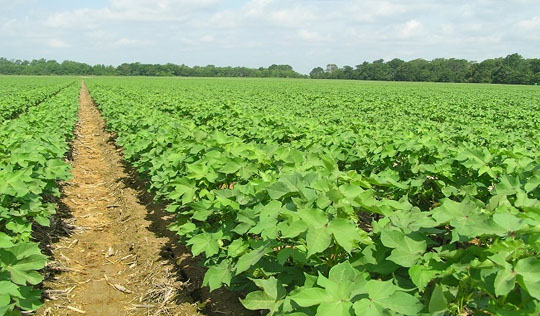14-B, Annamalai Layout,
Post Box No.905, Erode.
Deficiency Symptoms
The symptoms of zinc deficiency appear after three weeks of sowing, causing bronzing of new and old leaves. The brown coloured spots extend from the leaf tip towards the base and scorching of leaves occurs on the margins. The scorched portion turns brown (Plate 1). Interveinal chlorosis in the form of golden yellow colour is observed in the middle leaves. The old and middle leaves also show upward or downward cupping tendency (Plate 2). The plants bear less fruits and opening of bolls is abnormal.





